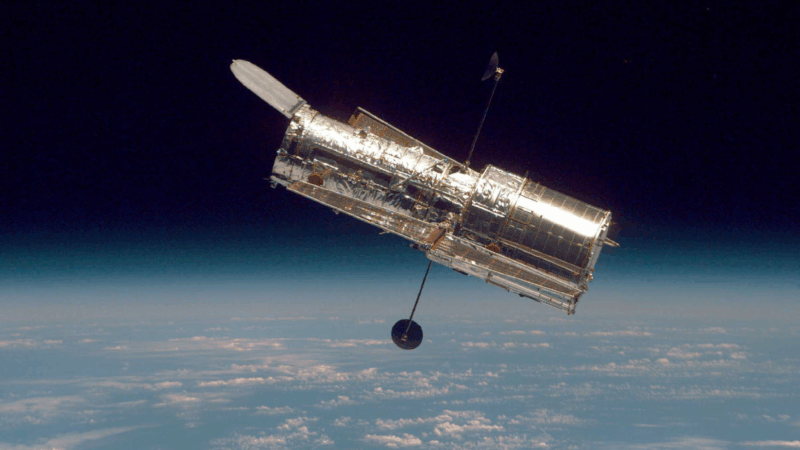Greening the Greens
This time of year golf might be the farthest thing from your mind. But during the off-season golf course managers get to strategize how to best treat their million dollar turf. Some golf courses have a bad rap with environmentalists. But as WBHM’s Tanya Ott reports there’s a budding green movement in the golf industry.
Golf courses take knocks for using too many chemicals and too much water. Audubon International estimates the average American golf course uses 312,000 gallons a day. Gil Rogers is with the Southern Environmental Law Center. He says that’s a boatload of water.
“In Georgia, they’re defined as agriculture which doesn’t make any sense, but that allows them to use a lot more water than they would otherwise be able to.”
That can be a problem, especially in places with water shortages. Places like Atlanta, where a federal battle over water rights might soon leave the city high and dry.
Of course, on this day water doesn’t seem like much of a problem. It’s been raining all night. I’ve come to the Stone Mountain Golf Course, just outside Atlanta, to talk to superintendent Anthony Williams. He won golf’s highest environmental stewardship award this year.
Technicians raise the reels on the mowers to help protect the wet turf. Williams says it’s been a tough fall. In October a big storm – they call it the 500 year storm – dropped 16 inches of rain on Stone Mountain in one day. Williams says the only thing that saved his course were the acres of native plants.
“When that flood literally came into the property those plants did exactly what nature created them to do. They fluffed out. Fanned out and really just acted like a sponge.”
When Williams took over a few years ago he ripped out the non-native ornamentals and replaced them with native perennials that don’t require any additional watering. Just rain. Stone Mountain isn’t just using less water. It’s also using fewer chemicals. Williams’ crew is creative. Take, for instance, one of their big problems: wild geese. They can do a lot of damage to million dollar turf.
“We refer to it as the in and out damage. The ‘in damage’ is when they’re actually eating the grass and physically tearing the green up. The ‘out damage’ is as they’re walking, well, the eaten grass becomes, well goose droppings and then the cleanup is very, very difficult.”
Conventional golf courses spray foul-tasting chemicals on the grass or light fireworks overhead to scare the geese. But at Stone Mountain their secret weapon is a 13 year old hound dog named Cushman. When the geese see Cushman coming, they think he’s a predator. Williams says it works like a charm!
This focus on environmental stewardship is paying off financially. Anthony Williams says they’re using significantly less fertilizer and insecticides. He estimates they’ve saved nearly $50,000 on chemicals in the last two years. How confident is he about the health of his golf course? I asked him if he was willing to put his course to the test. Apparently, some old-school players still lick their golf balls to clean them. Not a good idea when there’re pesticides on the grounds. Would Williams do it now?
“There’s a lot of things in nature that you probably wouldn’t want to eat or put in your mouth. So the golf ball’s going to encounter a lot of those along the way. I would definitely line up with the ‘do not lick your balls’. I’m gonna be on that side of the fence.”
More golf courses are starting to look at their environmental impact for the first time. They’re planting different grasses. And nearly a thousand U.S. golf courses use recycled or reclaimed water. Another reason not to lick your balls.
Light from satellites will ruin majority of some space telescope images, study says
Astronomers have long been concerned about reflections from satellites showing up in images taken by telescopes and other scientific instruments.
Defense Department is reviewing boat strike video for possible release, Hegseth says
In a speech on Saturday, Defense Secretary Pete Hegseth defended the strikes, saying: "President Trump can and will take decisive military action as he sees fit to defend our nation's interests."
Bama, Miami in, Notre Dame out and Indiana No. 1 in College Football Playoff rankings
Nobody paying attention for the past 24 months would be surprised to see Indiana – yes, Indiana – leading the way into this year's College Football Playoff.
McLaren’s Lando Norris wins first F1 title at season-ending Abu Dhabi Grand Prix
Red Bull driver and defending champion Max Verstappen won the race with Norris placing third, which allowed Norris to finish two points ahead of Verstappen in the season-long standings.
A ban on feeding pigeons ruffles lots of feathers in Mumbai
The pigeon population has exploded — a result of people feeding the birds. For some it's a holy duty and a way to connect to nature. Critics point to health risks tied to exposure to pigeon droppings.
UN humanitarian chief: world needs to ‘wake up’ and help stop violence in Sudan
The UN's top humanitarian and emergency relief official has told NPR that the lack of attention from world leaders to the war in Sudan is the "billion dollar question".







